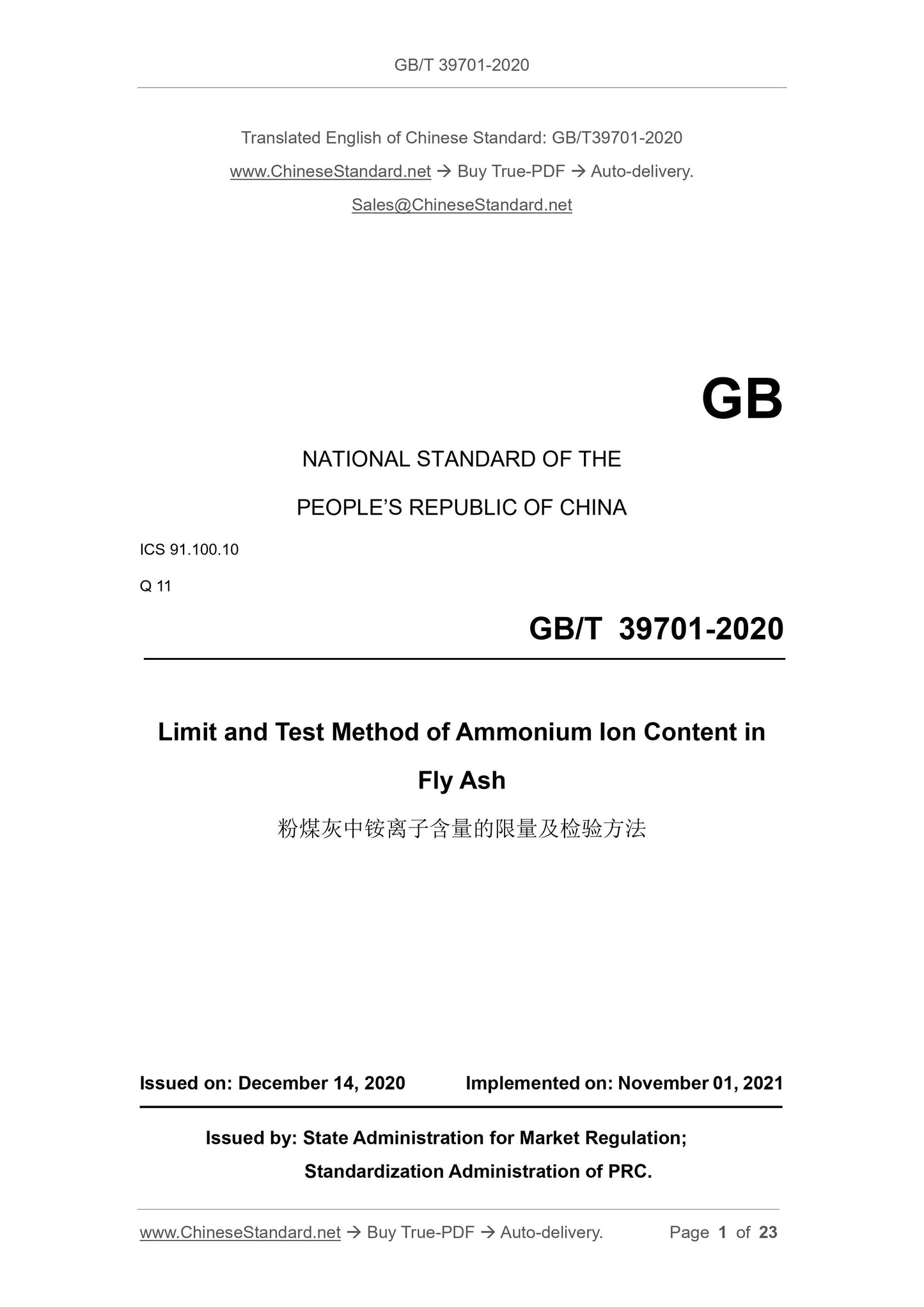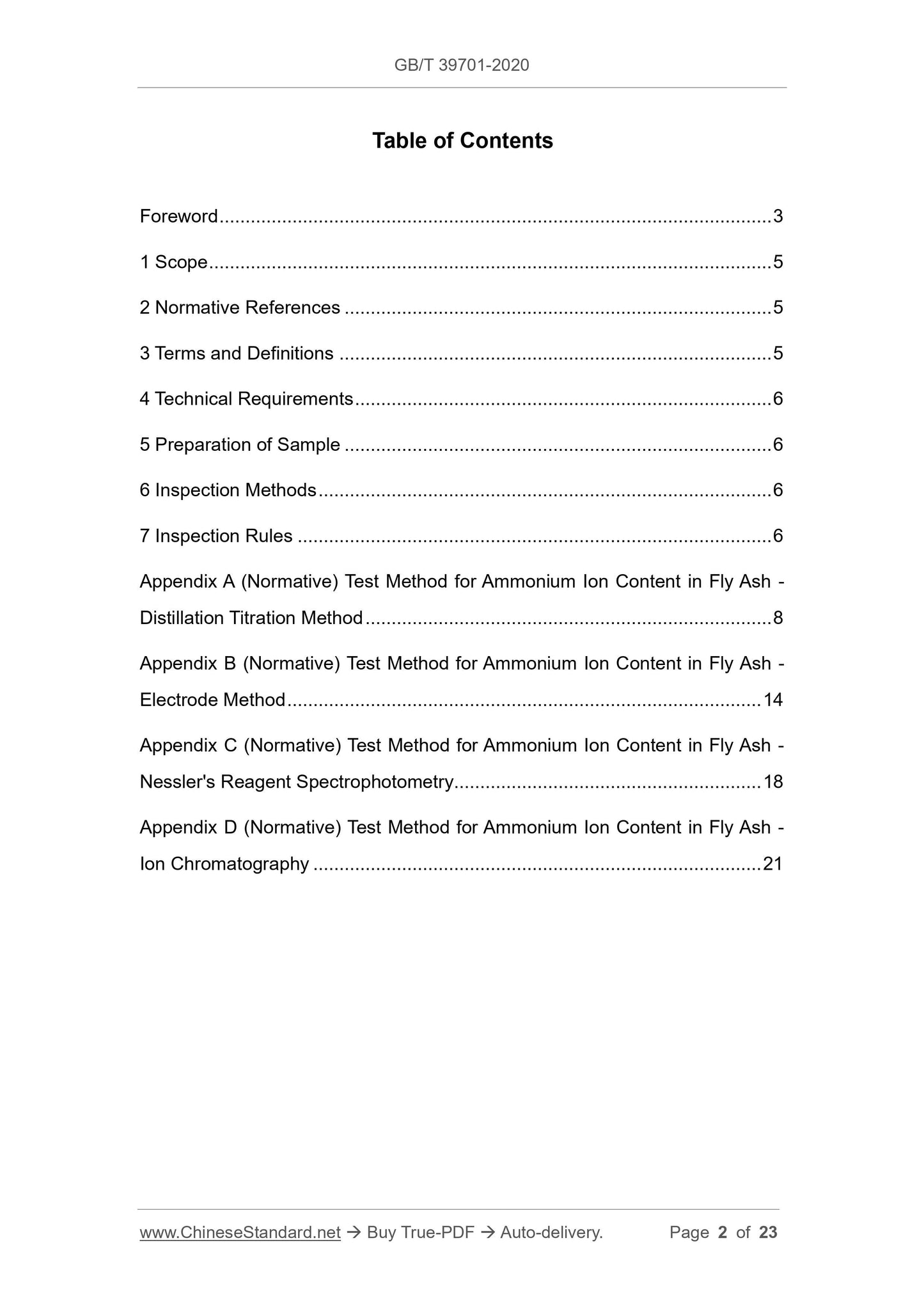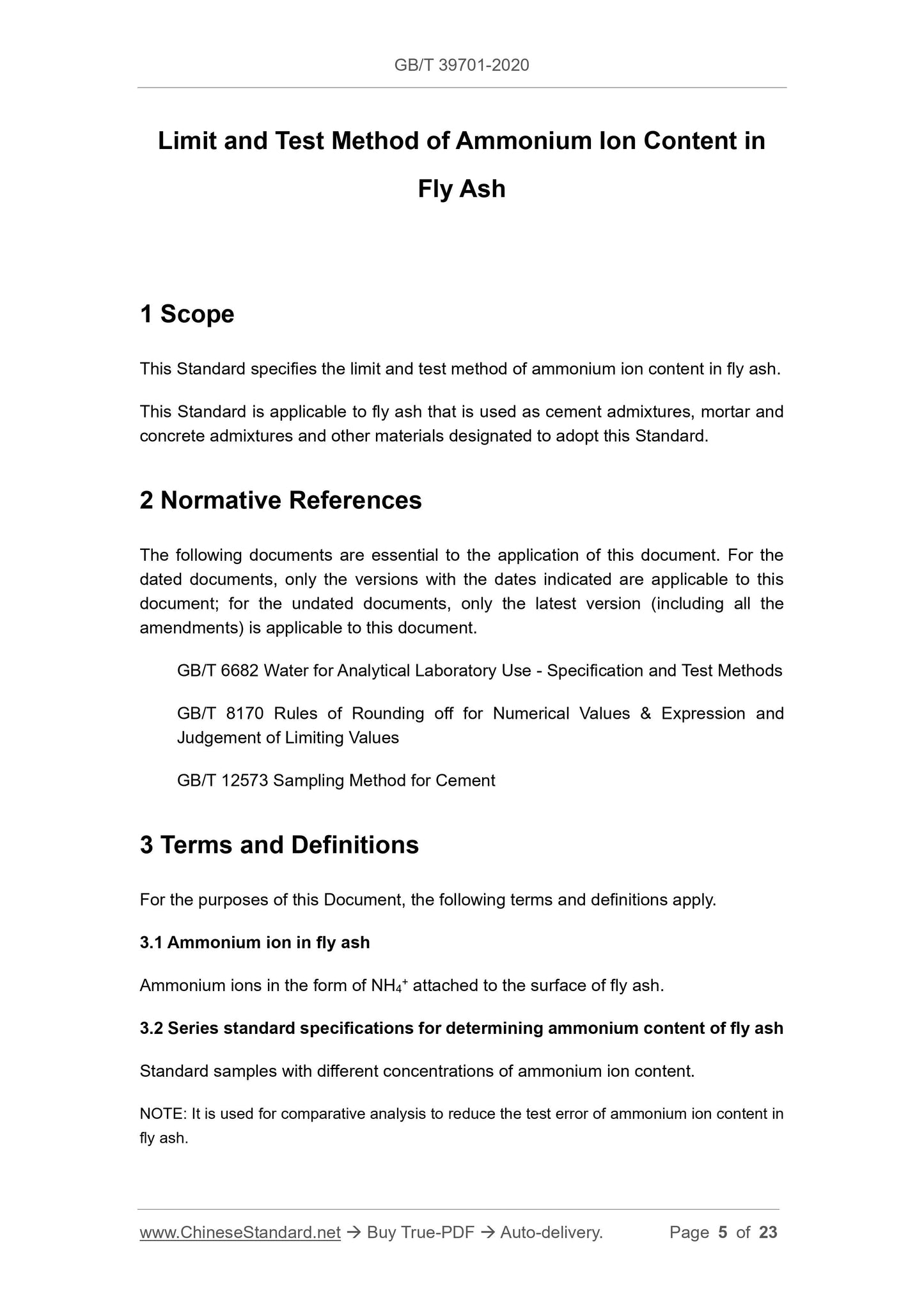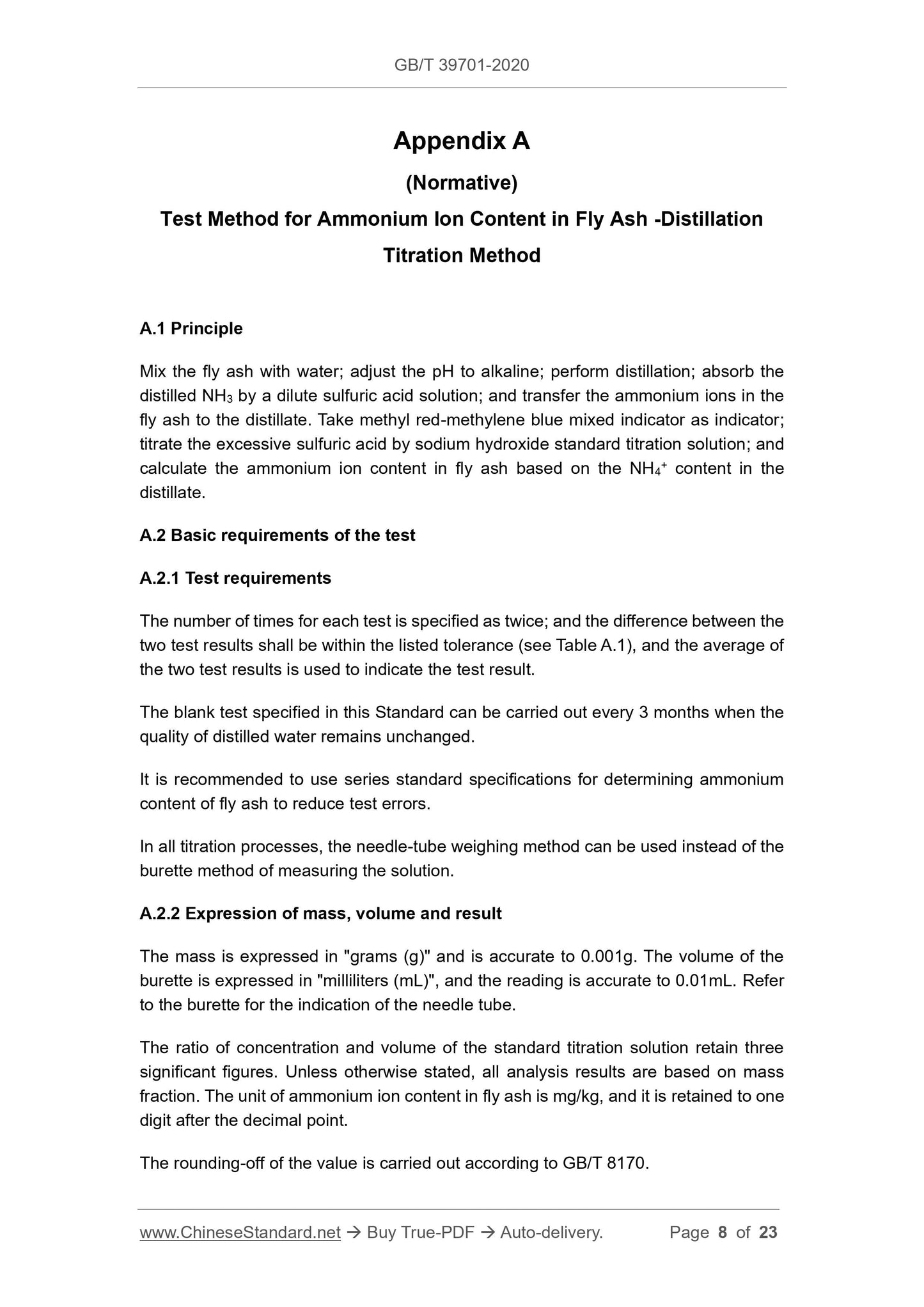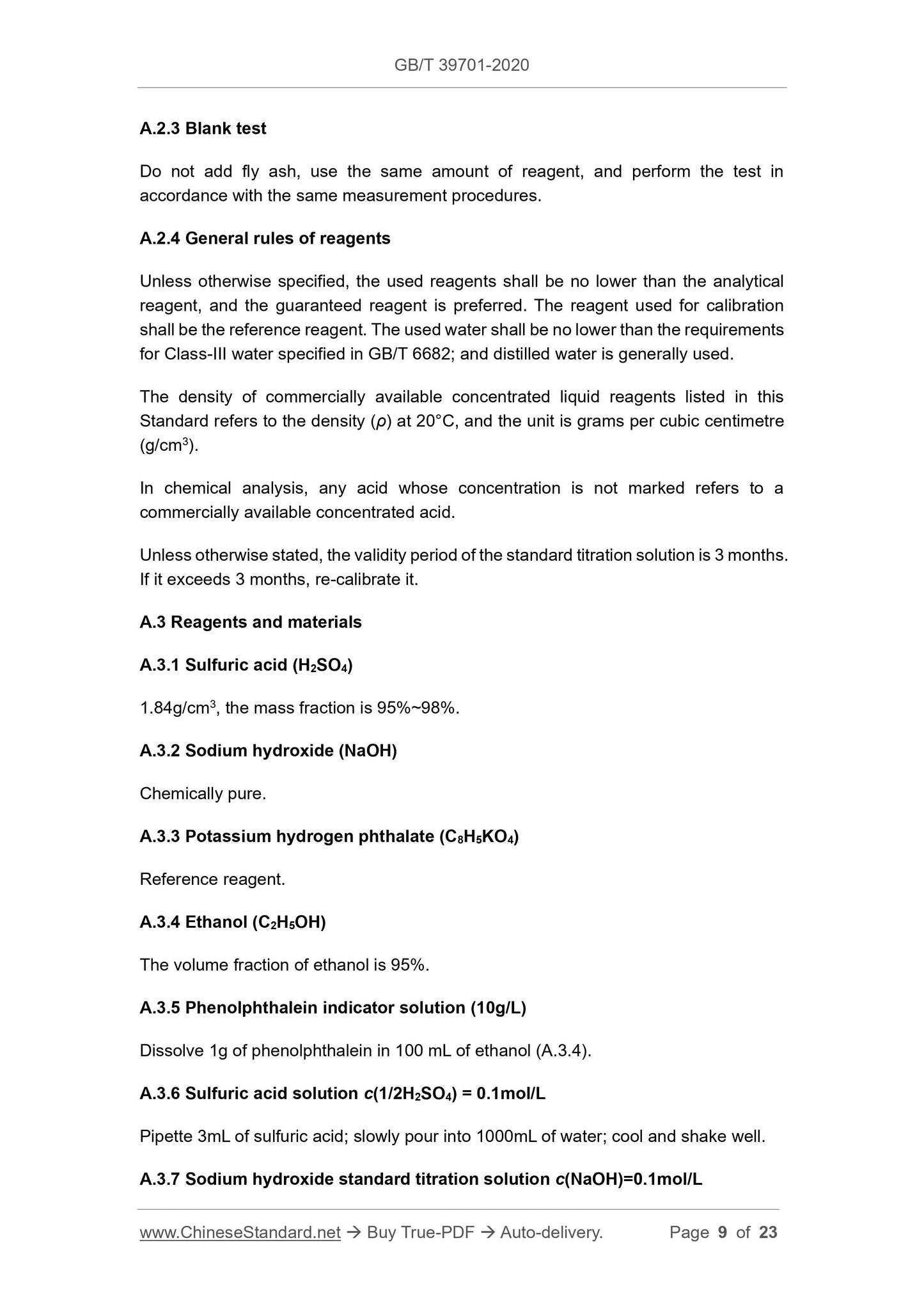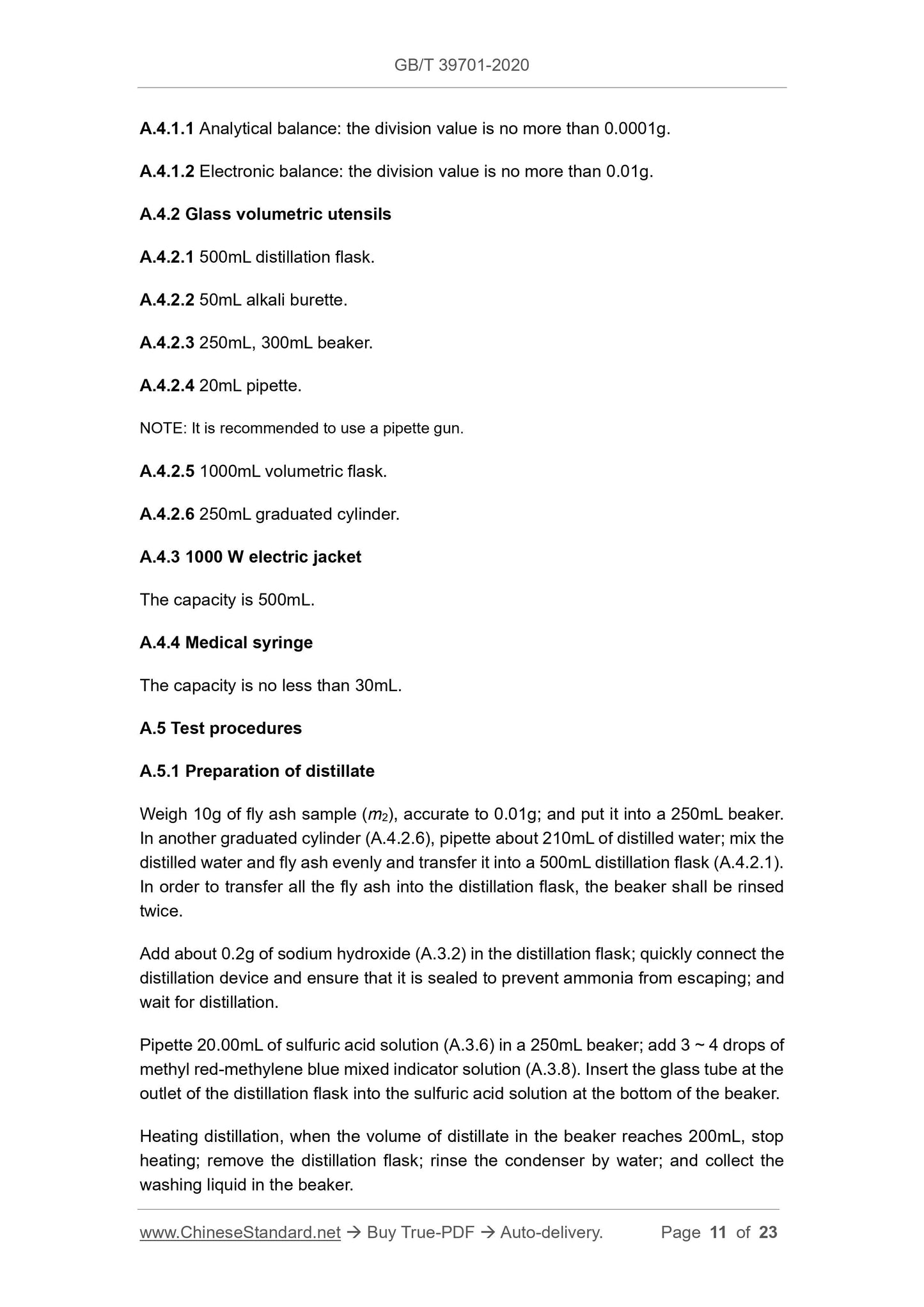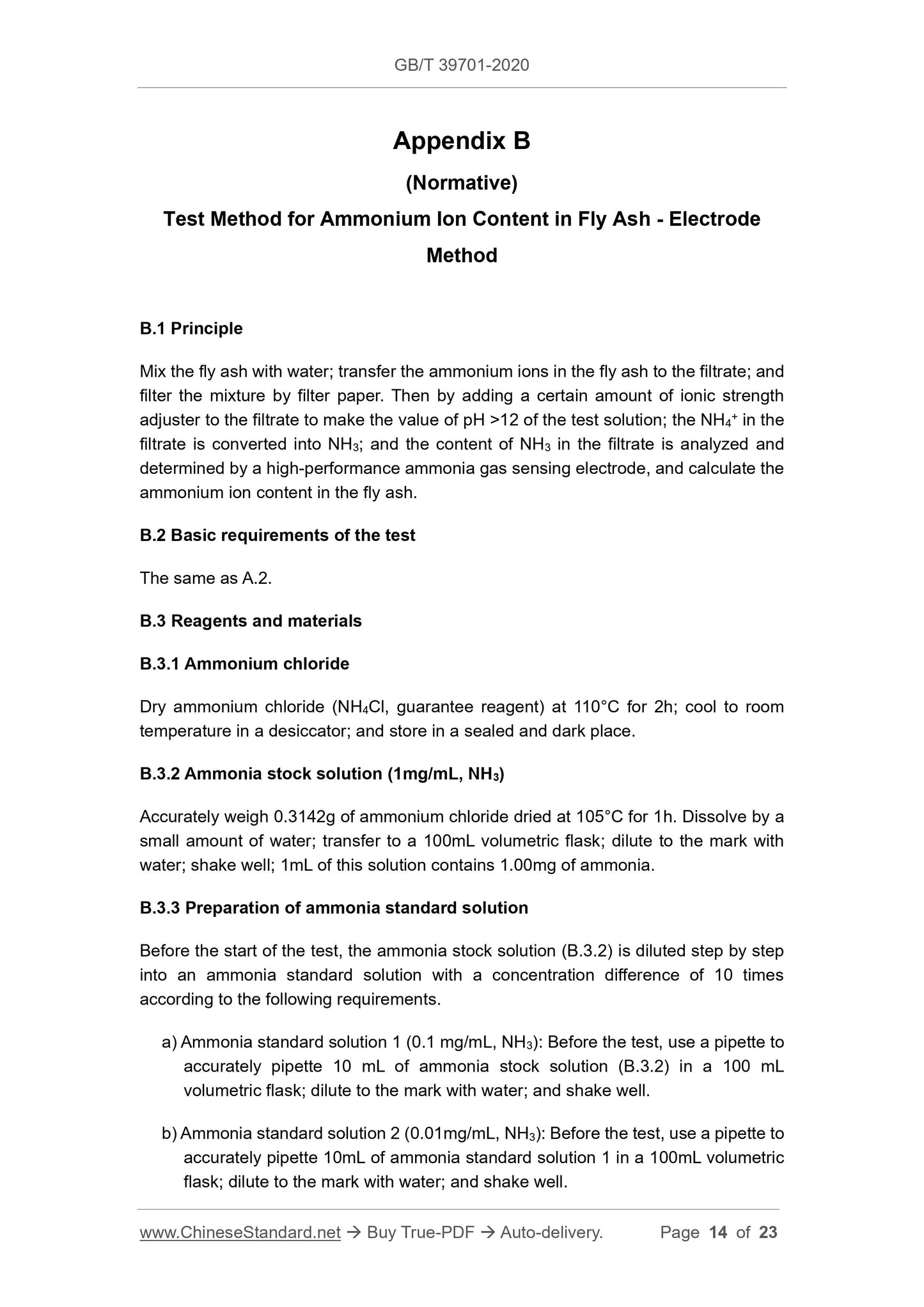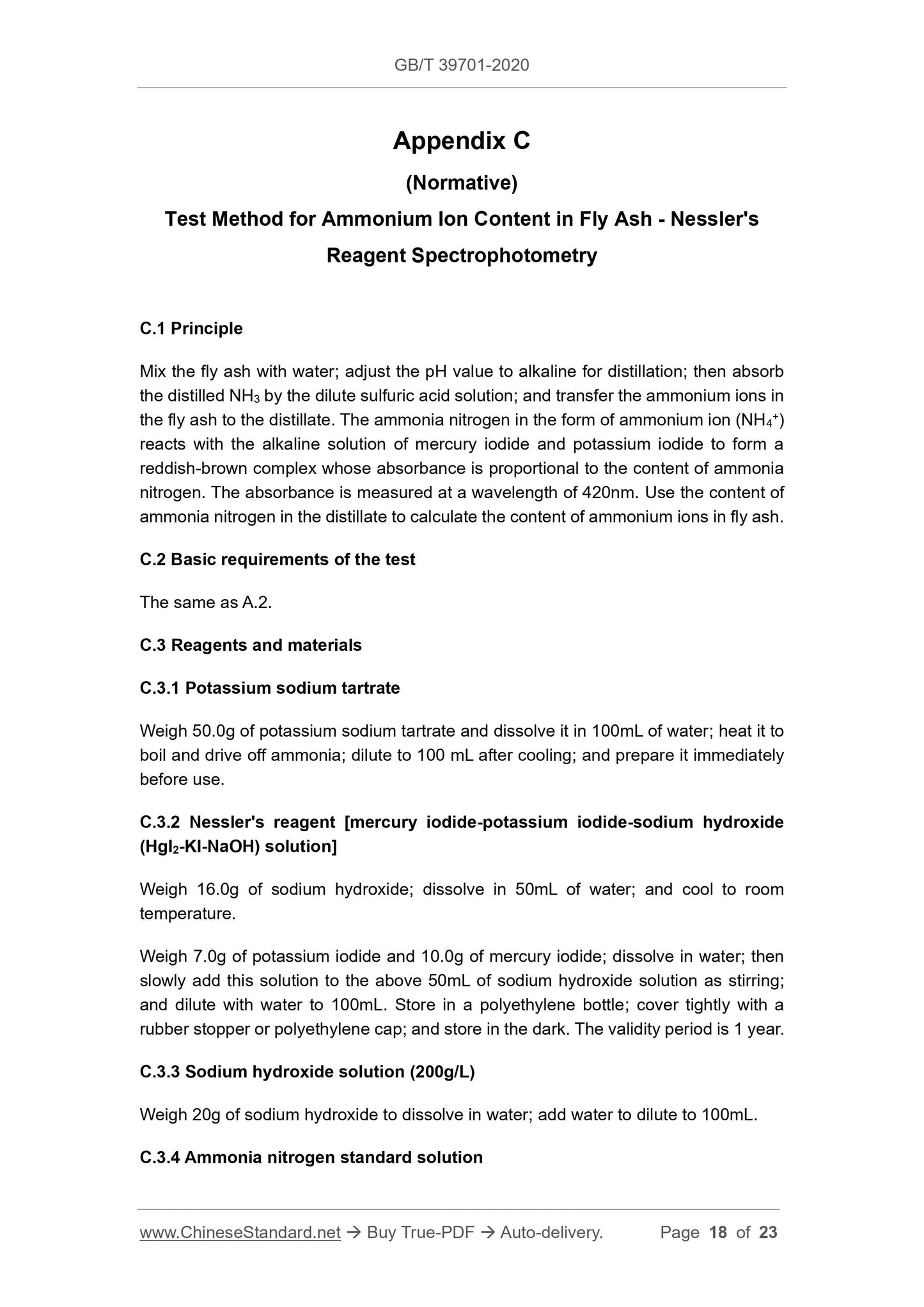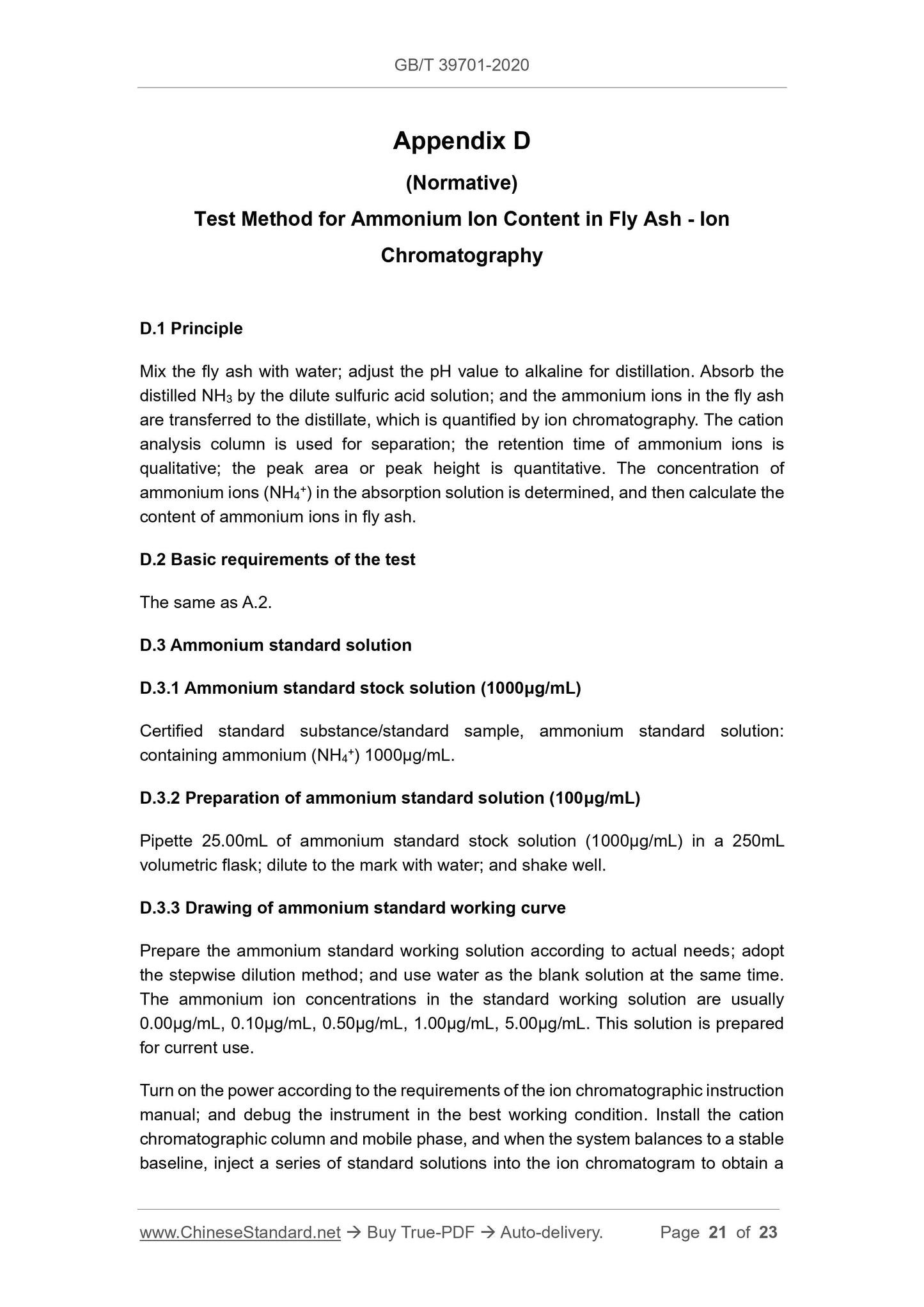1
/
of
9
www.ChineseStandard.us -- Field Test Asia Pte. Ltd.
GB/T 39701-2020 English PDF (GB/T39701-2020)
GB/T 39701-2020 English PDF (GB/T39701-2020)
Regular price
$260.00
Regular price
Sale price
$260.00
Unit price
/
per
Shipping calculated at checkout.
Couldn't load pickup availability
GB/T 39701-2020: Limit and test method of ammonium ion content in fly ash
Delivery: 9 seconds. Download (and Email) true-PDF + Invoice.Get Quotation: Click GB/T 39701-2020 (Self-service in 1-minute)
Newer / historical versions: GB/T 39701-2020
Preview True-PDF
Scope
This Standard specifies the limit and test method of ammonium ion content in fly ash.This Standard is applicable to fly ash that is used as cement admixtures, mortar and
concrete admixtures and other materials designated to adopt this Standard.
Basic Data
| Standard ID | GB/T 39701-2020 (GB/T39701-2020) |
| Description (Translated English) | Limit and test method of ammonium ion content in fly ash |
| Sector / Industry | National Standard (Recommended) |
| Classification of Chinese Standard | Q11 |
| Classification of International Standard | 91.100.10 |
| Word Count Estimation | 15,178 |
| Date of Issue | 2020-12-14 |
| Date of Implementation | 2021-11-01 |
| Quoted Standard | GB/T 6682; GB/T 8170; GB/T 12573 |
| Regulation (derived from) | National Standard Announcement No. 28 of 2020 |
| Issuing agency(ies) | State Administration for Market Regulation, China National Standardization Administration |
| Summary | This standard specifies the limit and inspection method for the content of ions in fly ash. This standard applies to fly ash used as cement admixtures, mortar and concrete admixtures and other materials designated to adopt this standard. |
Share
